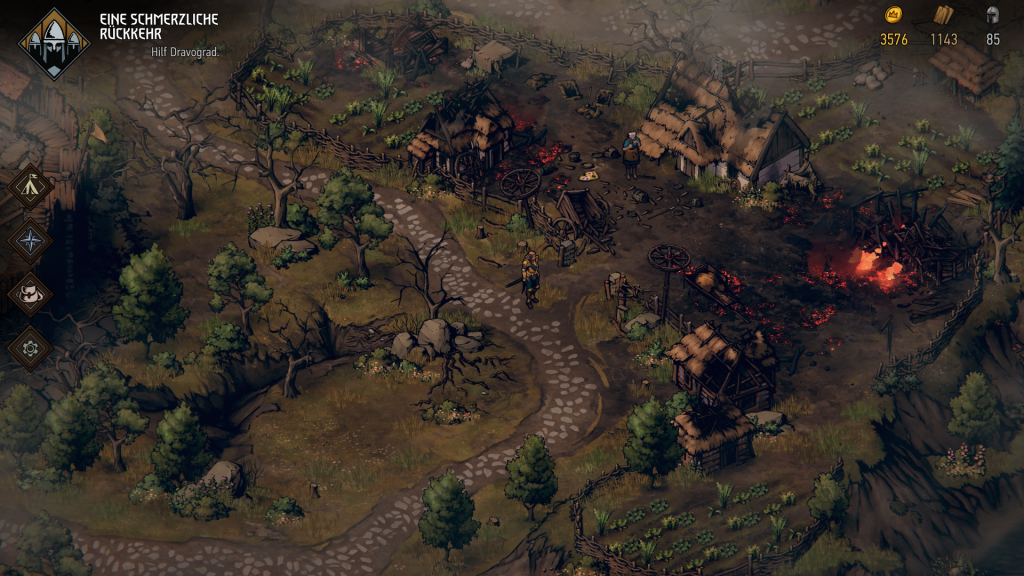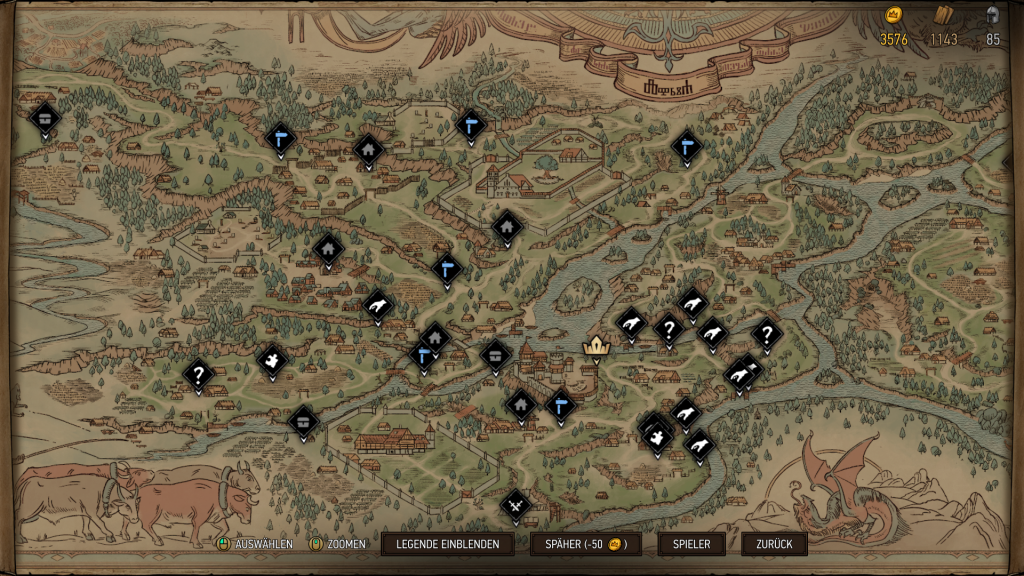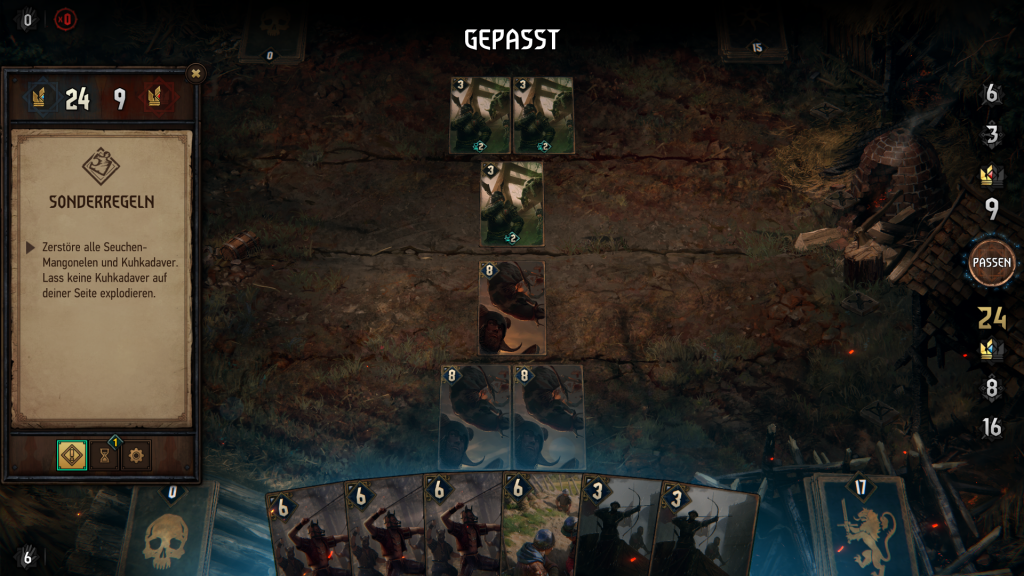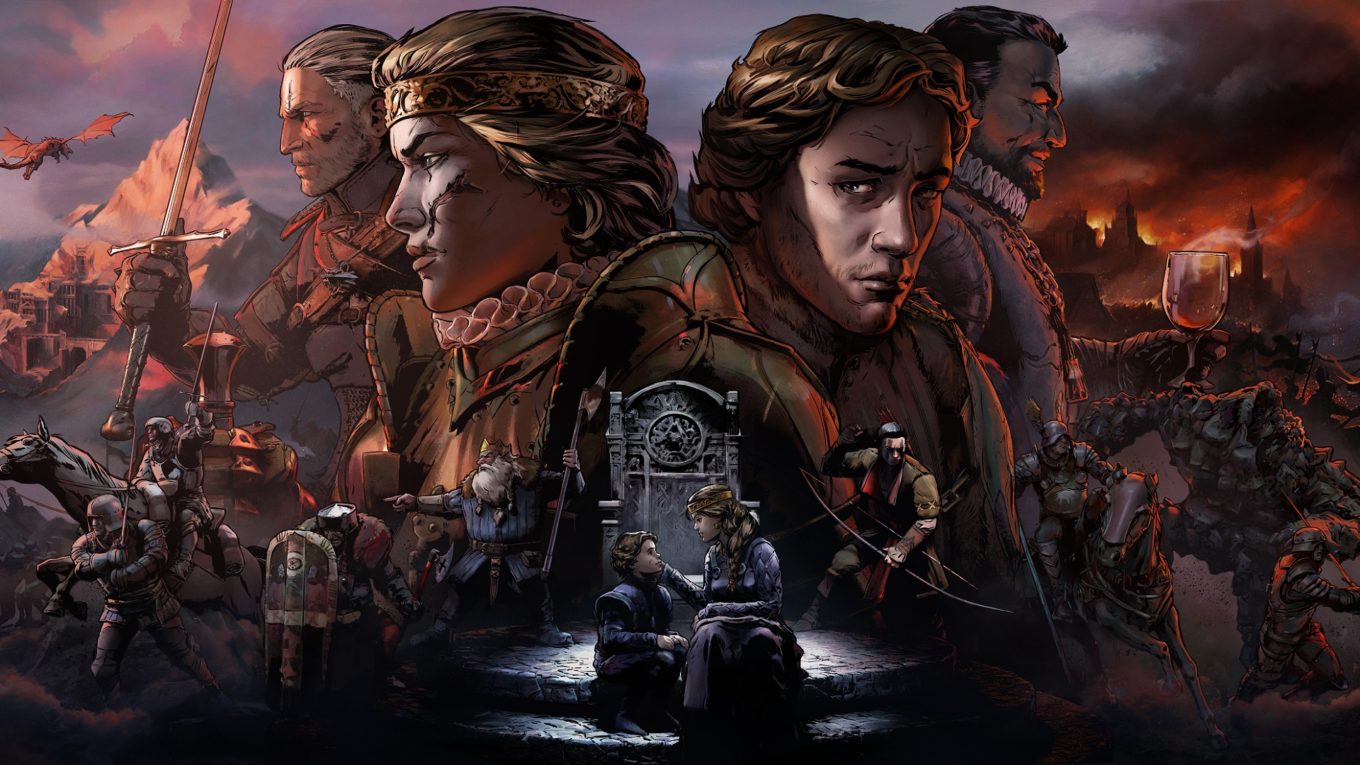Throne breaker: The Witcher Tales tested
Originally planned as an add-on for the multiplayer game Gwent: The Witcher Card Game, Thronebreaker: The Witcher Tales is now available as a standalone single-player RPG. The barely served genre mix of role-playing, with an extensive campaign paired with trading card fights, brings a breath of fresh air into the world of Witcher. If the experiment worked, you can find out here.
Bend your knee to the queen!
In Thronebreaker we take control of Meve, Queen of Lyria and Rivia. Fans of Andrzej Sapkowski’s Witcher novels are likely to be sensitive to the monarch’s name, as she already made her debut in “The Heritage of the Elves” and “Baptism of Fire”. CD project picks up a part of the extended Witcher Lore, which has not yet been highlighted in the games. The narrative about the leader paints a stirring story about betrayal, honor and the burden of making tough decisions when the royal duty demands it. Story, dialogues and characters inspire in typical Witcher manner with finesse, epic and exciting twists. Narratively, the Polish developer studio delivers first-class quality as usual. All figures convince with great speech output, which was fully synchronized in German. Meve meets familiar faces from the trilogy, including the sorcerer Geralt, during her journey through the northern kingdoms. The adventure remains exciting and motivating at all times during the 25-30 hours of play.
From an isometric perspective, Meve is controlled by five very varied, freely accessible worlds. Thronebreaker visually surprises with a beautifully animated world full of details. Again and again I caught myself stopping during my many explorations to admire the details in the landscape and objects. Speaking of exploring – as you travel with Meve through war-torn lands, don’t forget to look for resources. Gold, wood and troops are essential to improve your card decks. Hidden treasure chests can be found using clues or in hard-to-reach destinations. The golden chests usually unlock objects for Gwent and have no influence on the actual adventure. So the two games can’t be viewed completely detached from each other. Not least because even in the main menu of Thronebreaker the option to start Gwent is available.

Plague and cholera
Animated cutscenes inspire with great staging and rousing atmosphere. The events are accompanied by an atmospheric narrator who creates the feeling of a real Witcher fairy tale. In many, often coincidental, encounters Meve is confronted with difficult decisions that cannot be divided into good and evil. The narrative style continues the typical “Nothing is only good or evil” style in an excellent way. Since your companions will not always agree with you, it is important to think carefully about the consequences of your actions. The morale of the troops also plays an important role on your journey. This is how your henchmen react to decisions made during the main and side quests. If the morale drops to a bad level, your cards lose strength. On the other hand, a good-humoured army distributes considerably more. Here it is necessary to find a balance that weighs up the benefits and costs.
In The Wichter 3 Geralt von Riva acted as an identification figure for the player; in Thronebreaker I quickly realized that Meve didn’t allow much room for projection of my own values and ideas. The lyrical queen is strong, courageous, uncompromising and bears a great responsibility in the war against Nilfgaard’s troops. There’s no room for neutral decisions. The possibility of governing rather leniently or harshly is open and significantly influences the outcome of history. According to the CD project, at the end of the journey, one of 20 different ends are waiting for you. This motivates on the one hand to act deliberately and on the other hand to play through several times.

At arms!
The introduction to the numerous fights was less successful. That’s how hard it was for me to understand all the rules at first. Since I don’t have any experience with Gwent or comparable trading card games, it was a bit difficult for me to get started. For me as a beginner, the skills of the individual maps and the fights were explained in too little detail. After one or two hours most of the hurdles were overcome and my enthusiasm for tricky card duels was awakened. In addition to standard battles that follow the rules of Gwent, story and puzzle battles provide a lot of variety. Especially the second one requires the careful use of your given decks in order to master the challenges. In only one round you have to study the abilities of your own troops and opponents to find a solution. At first I considered them annoying, but soon I liked them because they taught me indirectly good moves. Card designs and animation of skills are fantastically implemented and bring a lot of life into the fights.
The balancing of the battles was somewhat immature in some places, so that fights were often too easy or tricky. Especially in puzzle fights I was able to find solutions for some without having to think much about it, while for others I was about to pull out a piece of paper to record a strategy. There is still room for improvement here. Story battles are also varied by creatively depicting current story situations with unique cards.
The standard fights known from Gwent are held in three rounds, but always surprise with great twists. Meve herself can intervene in battle as the leader of the army, for example by strengthening your troops or attacking enemies. The skillful use of leader abilities can significantly change the outcome of a battle in your favor.

Set up the camp, we’ll stop!
Collected resources can be spent on improvements or new cards in the army camp. Ability trees can be used to strengthen troops, unlock new individual cards, or increase the amount of resources collected. The training place allows you to try out new strategies in skirmishes. In the fair tent all your companions meet to enjoy a measure of mead and chat. This opportunity can be used to get to know everyone better and to debate current events. The card deck can be edited in the command tent. A limitation of the number of cards and strength, sets the framework for your deployable army. Here, too, it is important to find a good balance between attack, defense and special cards. Newly researched units can also be created for the first time in the command tent and added to the active deck. Forward-looking planning made my life much easier, especially in the second half of the game.
TO CONCLUDE
Is Thronebreaker: The Witcher Tales a fully-fledged independent role-playing game or is it an extended addon for Gwent? This can be answered as clearly as Meve hates the Nilfgaarder: A very clear yes! The RPG does not have to hide behind the “big ones”. The latest game from the house of CD-Projekt convinced me with a fantastic story, interesting characters, morally serious decisions and great size. The role play fulfills everything my heart desires and pairs the genre, in impressive whiteness, with established trading card principle. Only the somewhat difficult entrance and the still unripe balancing attract negative attention. Witcher and genre fans can strike without hesitation!
What is Thronebreaker: The Witcher Tales? Genre mix of isometric role playing paired with collectible card fights set in the world of The WitcherPlatforms: PC (GOG)
Tested: on PC Intel Core i7-7700, 16GB RAM, GeForce GTX 1080
Developer / Publisher: CD-Project RED / CD-Project
Release: October 23, 2018










